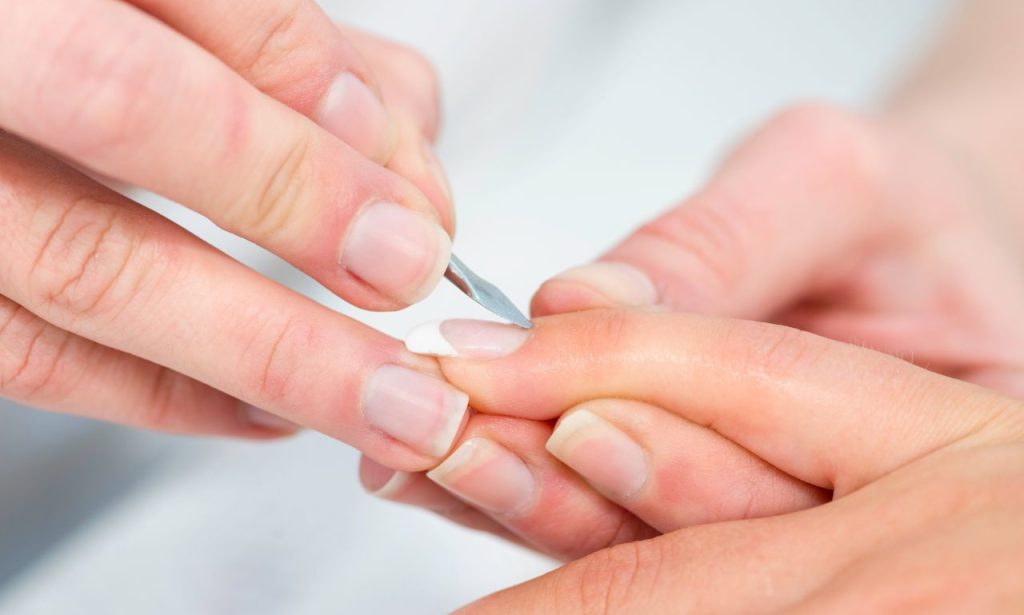There’s nothing more frustrating than spending your hard-earned money on a fresh set of acrylic nails, only to have them pop off days—or hours—later. If you’ve found yourself asking, “Why are my acrylic nails popping off?”, you’re not alone. This is a common issue, especially among first-timers or those trying DIY acrylics at home. But it’s not just about bad luck. Your nails are trying to tell you something—and it usually comes down to a few overlooked steps. Let’s examine why this happens and how you can prevent it.
Natural Nails Were Too Short or Weak
Your natural nails are the foundation upon which your acrylics are built. When they’re too weak or short, they simply can’t hold the acrylic extensions up. It’s similar to building a house. No matter how beautiful the house is, if the foundation is not strong, the whole thing topples over. Short nails do not have sufficient surface area for the acrylic to bond to, and therefore, they are more likely to pop off with minor pressure or minor impact.A client once came to me after her fourth set of acrylics failed within weeks. Her natural nails were paper-thin and barely extended past her fingertips. We took a three-month break from acrylics, focusing instead on strengthening treatments and gentle care. The difference in her next acrylic application was night and day – those nails stayed firmly in place for nearly a month.
The Cuticles Were Not Prepared Correctly

Proper cuticle preparation is crucial for acrylic nail longevity, yet it’s often rushed or overlooked. Your cuticles must be pushed back and the excess skin removed to create a clean surface for application.
When cuticle preparation is inadequate, tiny bits of skin remain on the nail plate. These create minuscule barriers between your natural nails and the acrylic product. Water and moisture can then seep into these gaps, compromising the bond and eventually leading to lifting and popping off.
Professional nail techs know this step is non-negotiable. They take their time, gently pushing back cuticles and carefully removing the dead skin without damaging the living tissue. This attention to detail significantly affects how long your acrylics will last. If your technician rushes through this step, consider finding someone who understands its importance.
Wear and Tear
Daily life puts your nails through more stress than you might realize. Using your nails as tools, frequent hand washing, and exposure to chemicals, all contribute to premature lifting and popping.
Your gorgeous acrylic nails weren’t designed to open soda cans, scrape labels off jars, or pry things open. These actions place immense pressure on the point where your natural nail meets the acrylic, gradually weakening the bond. Hot water is another major culprit – frequent exposure to it can cause expansion and contraction of both your natural nail and the acrylic material, eventually breaking the seal between them.
Consider how you use your hands throughout the day. Simple adjustments like using the pads of your fingers instead of your nails, wearing gloves for cleaning or dishwashing, and being mindful of high-impact activities can significantly extend the life of your acrylics.
Natural Nails Were Not Properly Filed or Cleaned
Surface preparation of natural nails is another critical factor determining how well acrylics adhere. Improper filing or inadequate cleaning leaves oils and debris that prevent proper bonding.
Your natural nails have a smooth, shiny surface that needs to be lightly buffed before application. This creates microscopic scratches that give the acrylic something to grip onto – like sanding wood before painting it. Skipping this step means applying product to a slippery surface, setting yourself up for premature popping.
Thorough cleaning is equally important. Natural oils from your skin, remnants of hand lotion, or even the oils in nail polish remover can create a barrier between your nails and the acrylic. A good nail tech will use a professional dehydrator to obliterate these oils, creating the perfect canvas for long-lasting acrylics.
No Top Coat was Used
A quality top coat is like the roof on your house – it protects everything underneath from damage. Without it, your acrylic nails are vulnerable to chips, cracks, and premature lifting.
The top coat serves multiple purposes. It seals the edges of your acrylics, preventing moisture from seeping underneath. It also adds a layer of protection against impacts and chemicals. Finally, it gives your manicure that glossy, professional finish that keeps it looking fresh longer.
I’ve seen countless clients skip the top coat during at-home maintenance and then wonder why their nails start lifting days later. This simple step takes just minutes but can add a week or more to the life of your manicure. Don’t cut corners here – invest in a quality professional-grade top coat and apply it every few days to maintain the seal.
Nail Primer + Dehydrator Were Not Used.
Nail primer and dehydrator application might seem like an extra step, but they’re really important in assisting to create a strong bond between your natural nail and the acrylic product. Nail dehydrators remove moisture and oils from your nail plate, providing a completely clean surface. Primers then change the pH of your nail and create a tacky layer which the acrylic can firmly bond to. Together, they’re like the secret adhesive that keeps everything in place.
Many budget salons skip these products to save time and money. Others might use them but apply them incorrectly or use poor-quality products. The result? Nails that look great when you leave the salon but start popping off within days. If you’re consistently having issues with lifting, ask your nail tech about their primer and dehydrator protocol – their answer will tell you a lot about their professional standards.
How do I Keep My Acrylic Nails From Popping Off?
Preventing acrylic nail pop-offs requires attention both during application and in your daily maintenance routine. Following these practices will dramatically improve your nail longevity.
Start off by finding a quality nail technician who is not so rushed with preparation steps. See how she operates – is she taking the time needed to prep your natural cuticles and nails? Are they using a primer and dehydrator? Being gentle about not getting the product on your skin? These small things mean an awful lot.
At home, treat your nails with care. Wear gloves when cleaning or washing dishes. Avoid using your nails as tools. Apply cuticle oil daily to maintain flexibility and prevent brittleness, but keep it away from the surface of your acrylics. Consider a protein-rich diet and biotin supplements to strengthen your natural nails from within.
Regular maintenance fills are crucial, too. Don’t wait until your nails are lifting significantly – schedule fills every 2-3 weeks to address minor lifting before it becomes a major issue. This consistent care prevents the “floodgates” effect where moisture gets under one small lifted area and quickly compromises the entire nail.
Why Do My Acrylic Nails Keep Lifting Off?

Persistent lifting suggests there’s a systematic issue with either your nail chemistry or the application technique being used. Understanding these deeper causes can help you find a permanent solution.
Some people simply have naturally oily nail beds that make it difficult for acrylics to adhere properly. If this sounds like you, an extra-strength dehydrator and specialized primer designed for oily nails might be necessary. Your nail tech should be able to recommend products specifically formulated for your nail type.
Your lifestyle could also be contributing to the problem. The harder it is to maintain acrylic retained, particularly swimmers, dishwashers, nurses, and others with hands that are always wet or in chemicals. The solution is not necessarily not to wear acrylics but to be more cautious about maintenance and protection.
It’s also worth considering whether you are sensitive to certain acrylic products. Different brands use different formulations, and what works perfectly for one person might cause lifting for another. Don’t be afraid to ask your nail tech to try different products if you’re experiencing consistent problems.
Conclusion
Beautiful, long-lasting acrylic nails aren’t just about the application – they’re about proper preparation, quality products, and smart maintenance. Understanding why your nails are popping off is the first step to solving the problem permanently.
Remember that even the most experienced nail enthusiasts occasionally deal with popped nails. When it happens, resist the urge to fix it yourself unless you have professional training. Improper repairs can damage your natural nails and set you up for even more problems down the line.
So, instead of risking more damage, call your nail tech for a quick fix. Most salons will fix one popped nail for a minimal fee, especially if it’s soon after your appointment. This professional touch-up keeps your entire manicure intact and protects your natural nails. With the right know-how and care, your next acrylic set can stay beautiful and firmly in place for weeks – time, money, and aggravation that you’ll save down the line.
ALSO READ: What are Some of the 100% Vegan & Cruelty-Free Beauty Brands?
FAQs
Quality acrylic nails should last 3-4 weeks before needing a fill, with no popping off during that time. If nails are popping off sooner, there’s likely an application or maintenance issue.
While temporary fixes exist, it’s best to have a professional repair it to prevent damage to your natural nail and ensure proper adhesion.
No, press-ons typically have a shorter lifespan than professionally applied acrylics. They’re designed for temporary wear rather than long-term durability.
Yes, extremely long or pointy shapes create more leverage against your natural nail, increasing the risk of popping off. Shorter, rounder shapes tend to be more durable.
Immediate popping usually indicates improper preparation of the natural nail, inadequate dehydration, or poor-quality products. Consult with a different nail technician for better results.



